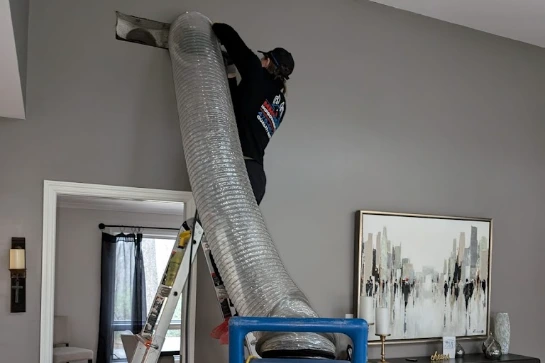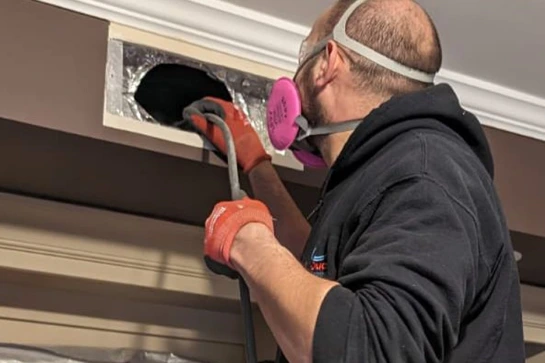After a long day at school or work, you might come home and see strange, dark spots on your bathroom walls or windows. These spots are called mold. Mold grows best in warm and wet places, like after a hot shower. It does not look nice and can sometimes make you feel sick if it stays too long. Water on walls or a little moisture on windows may seem like a small problem, but when mold starts growing, it can be very hard to clean up. This guide will show you simple, natural ways to get rid of mold and mildew for good. You will learn why mold appears and how small changes, like opening a window after a shower or wiping away water, help keep your home clean and safe. These easy steps can help stop mold from coming back and create a healthier, happier home.


Understanding Mold and Mildew
Mold is a type of fungus that grows in warm, damp places. Mildew is a special kind of mold that often looks like white or powdery spots. Both mold and mildew need moisture to grow, and if there isn’t enough fresh air or if water problems are not fixed, they can spread very fast. Proper mold removal and remediation are essential to prevent these issues. Health experts say that being around mold and mildew for a long time can cause problems like trouble breathing, allergies, and even serious infections, especially for kids, older people, and those who are already sick.
Key Point: To permanently get rid of mold and mildew, it’s not enough to just clean the visible spots. You must also fix the moisture issues that help them grow.
Step-by-Step Guide to Permanently Get Rid of Mold and Mildew
1. Identify the Moisture Source
Before you can eliminate mold, you need to understand why it is growing in the first place. Common moisture sources include:
- Condensation: When warm, moist air hits cold surfaces, condensation forms, especially on windows and bathroom tiles.
- Leaks: Dripping pipes, faulty roofs, or damaged gutters can lead to hidden damp spots.
- High Humidity: Areas with poor ventilation, like bathrooms and basements, tend to have elevated humidity levels.
Tip: Use a moisture meter to check suspect areas. Address any leaks or water intrusion immediately; otherwise, any mold you remove will likely return.
2. Protect Yourself
Safety is paramount when handling mold. Always cover yourself with personal protective equipment (PPE):
- Respirator or N-95 mask: Prevent inhalation of spores.
- Gloves: Use rubber or disposable gloves to avoid skin contact.
- Protective eyewear: Safeguard your eyes from chemicals and mold particles.
- Coveralls: Wear long sleeves and pants to reduce skin exposure.
By taking these precautions, you minimize the risk of health complications while cleaning.
3. Choose the Right Cleaning Agent
There are several effective cleaning solutions for mold and mildew. The best option depends on the surface you are treating:
- White Vinegar: A natural, non-toxic cleaner that kills up to 82% of mold species. Its acetic acid disrupts mold growth. (Spray vinegar directly onto the mold, let it sit for an hour, then wipe clean.)
- Baking Soda: A gentle abrasive that can be mixed with water to create a paste, helping to scrub away mold and deodorize the area.
- Bleach: Effective on non-porous surfaces (like tiles and glass), bleach can sanitize and remove mold. However, bleach does not penetrate porous materials and can release harsh fumes.
- Tea Tree Oil: Although pricier, this essential oil is a powerful antifungal agent. Mix one teaspoon with one cup of water, spray the affected area, and let it dry.
- Borax or Grapefruit Seed Extract: Both are effective, natural alternatives for cleaning mold without harmful chemicals.
4. Clean the Affected Area Thoroughly
Once you have chosen a cleaning solution, follow these steps for best results:
- Remove Loose Mold: Use a HEPA filter vacuum or a dry cloth to gently remove surface mold. Dispose of the cloth immediately afterward to prevent spores from spreading.
- Apply the Cleaner: Evenly spray your chosen solution over the moldy area. For example, if using white vinegar, fill a spray bottle and saturate the mold.
- Scrub the Surface: Use a stiff brush or sponge to remove the mold. For stubborn stains, repeat the application.
- Rinse and Dry: Rinse the area with clean water (if the cleaner requires rinsing) and thoroughly dry the surface. Use fans or open windows to speed up the drying process.
By following these steps, you can effectively remove the mold. However, permanent results depend on addressing any residual moisture. For detailed insight, read the article When to Call Experts for Mold Removal and Remediation Services?
Long-Term Solutions to Get Rid of Mold and Mildew Permanently
Some people might think about cleaning ducts themselves, but there are many good reasons to hire professionals:
Improve Ventilation
Good airflow is the single most effective method to prevent mold recurrence. Consider these tips:
- Install or Upgrade Exhaust Fans: In bathrooms, kitchens, and laundry rooms, use fans that vent outside.
- Open Windows: Even in winter, open windows for 10–15 minutes after showering to expel moist air.
- Use Air Purifiers: Devices equipped with HEPA filters can capture airborne mold spores and reduce their concentration.
Control Humidity Levels
Keeping your home’s humidity below 60% is crucial. Use the following methods:
- Dehumidifiers: Especially useful in basements or damp rooms, dehumidifiers remove excess moisture from the air.
- Air Conditioners: These also help to reduce indoor humidity, particularly during hot, humid days.
- Moisture Absorbers: Products like silica gel packs or desiccant bags can be placed in confined areas to absorb moisture.
Address Structural Issues
Sometimes, mold growth is a sign of underlying problems:
- Fix Leaks: Repair any plumbing, roof, or window leaks immediately.
- Insulate Cold Surfaces: Proper insulation can prevent condensation from forming on windows, walls, and pipes.
- Seal Cracks and Gaps: Use mold-resistant caulk to seal gaps around windows, doors, and bathrooms.
Preventative Maintenance
Regular cleaning and inspection can keep mold and mildew at bay:
- Weekly Cleaning: Regularly wipe down surfaces in high-moisture areas with a vinegar solution.
- Routine Inspections: Check areas prone to moisture for early signs of mold.
- Protective Paints and Sealants: Apply mold-resistant paints or sealants in areas like bathrooms and basements.
When to Call a Professional
While DIY methods are effective for small, isolated patches of mold, there are times when professional intervention is necessary:
- Extensive Mold Growth: If mold covers an area larger than 10 square feet or is deeply embedded in porous materials (like drywall or insulation), professional remediation may be required.
- Persistent Health Issues: If you or your family members experience ongoing respiratory or allergy symptoms, it is best to have the mold tested and removed by experts.
- Structural Damage: When mold growth is accompanied by water damage or structural issues, professionals can assess and repair the underlying problems.
Professional mold remediation companies not only remove visible mold but also address the moisture issues causing the infestation, making sure that you truly get rid of mold and mildew permanently.
Summary
To get rid of mold and mildew means not only cleaning the spots you see but also stopping extra water from making them grow back. By fixing leaks, using fans or opening windows to help air flow, and cleaning regularly with simple cleaners like white vinegar or baking soda, you can keep your home safe and healthy. These small steps work together to prevent mold from coming back so everyone in your home can breathe better and feel more comfortable.

